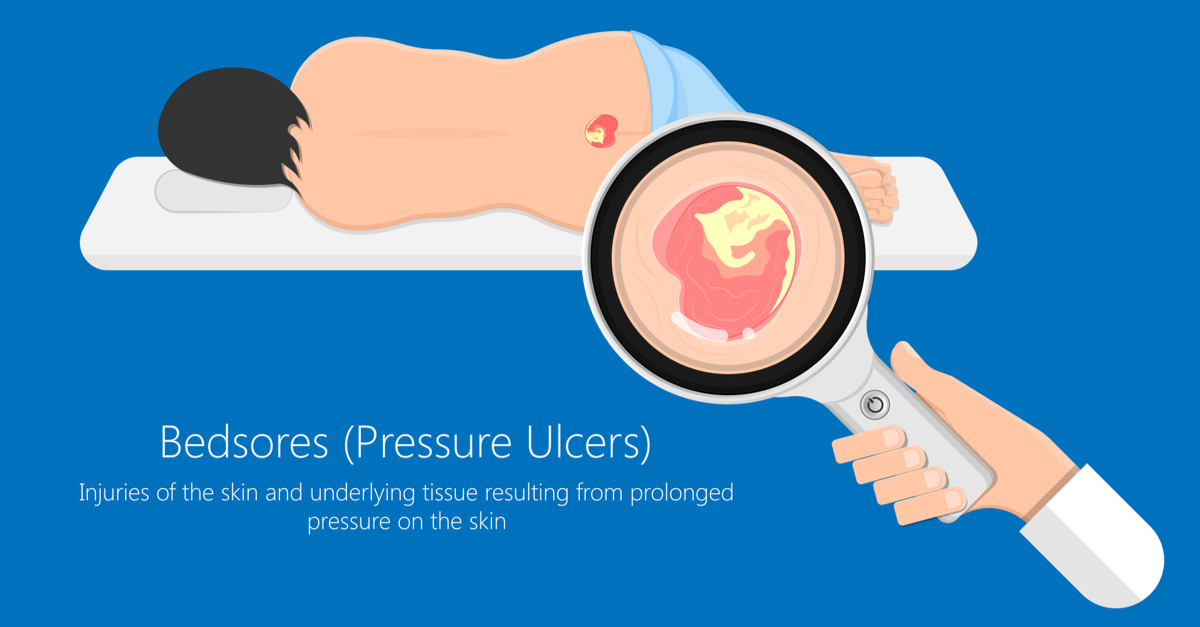
Bedsores Due to Medical Malpractice
Categories: Nursing Homes
Medical Malpractice Resulting in Bedsores or Pressure Ulcers: Learn Your Rights Here
Most people recognize the term ‘bedsores’, but often lack a comprehensive understanding of them. They generally know that older adults and disabled individuals bear the highest risk, but frequently overlook the fact that we can prevent these sores entirely. Bedsores, often a consequence of medical malpractice, pose a significant problem in nursing homes where they should never occur. They also commonly appear in hospitals, especially intensive care units where ventilated patients cannot move on their own. Consequently, nurses, techs, and other staff carry the responsibility of ensuring that patients are correctly turned and positioned. Bedsores are serious personal injuries and may even lead to patient fatalities.
If you or a loved one develops a bedsore, you should pursue legal advice to ascertain potential compensation for your injuries. People enter hospitals and nursing homes with the expectation of receiving proper care. The emergence of a bedsore glaringly indicates care negligence. If you or a loved one developed a bedsore at a hospital, nursing home, or any other type of assisted living or adult care facility, or if a loved one was wrongfully killed in a medical mistake, learn about your rights from our bedsores medical malpractice lawyers here at Medical Malpractice Universe.
What is a Bedsore?
Bedsores are also referred to as pressure ulcers or decubitus ulcers. Bedsores occur when there is an injury to the skin and tissue under the skin caused by prolonged pressure to a particular area. They can happen in a matter of hours or may take days, depending on the amount of pressure, friction, moisture, and condition of a patient.
What Causes Bedsores?
Certain contributing factors can cause bedsores to develop. These factors include the following:
Friction – friction can occur when an individual’s skin rubs against their bedding or clothing. This can irritate the skin and make the skin more fragile. Moisture can significantly increase the risk of a friction injury, especially if a person is incontinent or experiencing drainage from a specific area due to an injury.
Pressure – Persistent pressure on a particular body area can cause an interruption or reduction of blood flow to tissues. This impairs the ability of oxygen and other nutrients to go to these tissues, causing damage to the tissue or even tissue death.
Shear – According to the Mayo Clinic, shear occurs when two surfaces move in two different directions. For example, if the head of the bed is elevated, but the person slides down in the bed, the tailbone may move downward while the skin over the tailbone may stay in place, causing them to go in two opposite directions.
What are the Risk Factors for Bedsore Development?
Certain risk factors place an individual at higher risk for developing bedsores. While an individual may have risk factors for bedsore development, bedsores are entirely preventable, so the risk factors should never be used as an excuse for developing a pressure ulcer. Common risk factors for bedsore development includes the following:
- Inability to move or impaired mobility
- Impaired sensory perception
- Impaired nutrition or hydration
- Incontinence
- Other medical conditions impairing or affecting blood flow, such as vascular disease or diabetes
Stages of Bedsores
Pressure ulcers are staged. The higher the stage, the worse the pressure ulcer is and the more affected tissue. Pressure ulcers are staged the following way:
Stage 1 – The ulcer has not broken through the skin. The skin may appear red or purple, depending on the color of the skin. Typically the ulcer is sore to the touch and does not turn pale if firmly pressured.
Stage 2 – The ulcer caused a break in the top two layers of skin. The ulcers may appear as crater-like wounds, fluid-filled, and may also contain drainage or pus. These ulcers are typically sore and painful.
Stage 3 – These ulcers affect not only the top two layers of skin but also the fatty tissues. Stage 3 ulcers may produce a foul odor, discolored drainage, pus, and may be red. These typically need 1-4 months to heal.
Stage 4 – This is the worst type of pressure ulcer. Stage four ulcers are severe wounds involving muscles, ligaments, tendons, and bones. People with stage 4 ulcers often have visible muscle or bone showing, have signs of an infection, extreme pain, drainage, and eschar (a dark hard substance which is hardened dead wound tissue). A stage four pressure ulcer is almost certainly medical malpractice.
Why Are Bedsores Medical Malpractice?
There should be no occurrence of bedsores. Caretakers and nurses should implement appropriate interventions, such as frequent turning and positioning, for those at risk. Regular changing of incontinent individuals can help reduce the risk of pressure ulcers. With proper care, bedsores should be completely avoidable. Therefore, if you or your loved one have suffered from a bedsore that caused injury and necessitated medical treatment, consulting an experienced bedsore attorney is advisable to determine the cause of the bedsore.
Did You or a Loved One Develop a Pressure Sore or Bedsore? Call Our Medical Malpractice Lawyers
If you or a loved one has experienced serious personal injuries due to a pressure sore, bedsore, bed ulcer, or any other significant pressure or friction-related injury, find and arrange a consultation with one of our seasoned bedsore medical malpractice lawyers at Medical Malpractice Universe.
